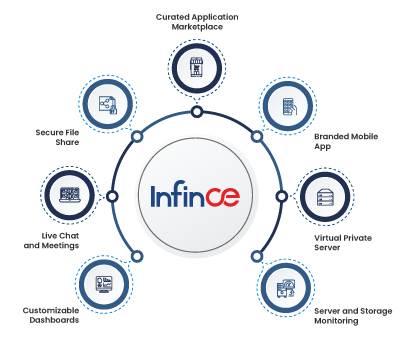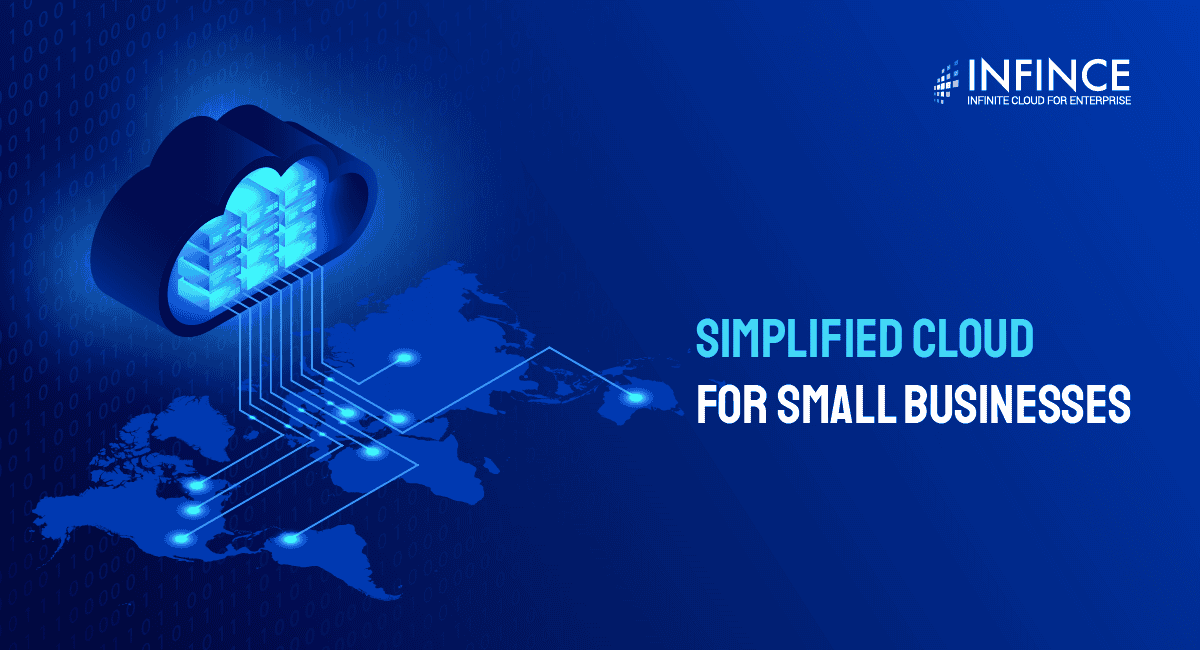The pandemic has ruffled our daily lives and work-life routines in many ways. It has changed the mode of working for businesses! The way businesses shifted to remote work has indeed shattered traditional work designs. Born out of sheer necessity to ensure uninterrupted workflows during the pandemic, remote work has led companies to create digital workspace teams and embrace hybrid work models. Compared to the on-premise infrastructure, cloud platforms are globally accessible, secure, and less expensive (post-adoption).
As the name indicates, a hybrid workplace model is a blend of in-office and remote work that offers more flexibility and support to employees and helps them achieve a better work-life balance. Decision-makers have shifted their business operations from location-centric models to human-centric models by providing suitable technological infrastructures and encouraging the right work culture of shared understanding of mutual needs and expectations. However, despite hybrid work being around for more than two years, several misconceptions still exist about hybrid workplaces. Let us have a look at five common myths about hybrid workplaces.
Read more: Things to Know When Adopting Enterprise Hybrid Cloud
Myth #1: Remote work hinders productivity
This is one of the biggest illusions about remote workspaces. On the contrary, lines between working hours and off-work hours tend to blur when employees work in a hybrid environment. Extreme flexibility drives productivity, and the absence of physical monitoring nurtures a culture of trust, empathy, and empowerment, boosting work outcomes. 44% of Buffer State of Remote Work /2022 Report say remote work helps them focus better on work, and 59% feel not having to commute daily has left them with more time on their hands that they can use productively. Being productive at work is more about following a culture of striking the work-life balance and achieving corporate goals than about the long hours of work you put in. Work outcomes matter more than activity metrics.
InfinCE a remote workplace collaboration platform, can help project team members to boost their productivity and efficiency by assisting them to work faster through collaboration and optimal use of resources. InfinCE has the tools that can bring together people across multiple geographies to plan meticulously and efficiently execute, allocate, track, and manage tasks while easing the management of documents.
Myth #2: It is more challenging to collaborate remotely than face-to-face
This runs true only in the case of non-adopters and nascent adopters of hybrid workspaces. Hybrid workspaces empower companies to develop capabilities to let their employees work from anywhere. Adopters of hybrid work technologies have at their disposal the right tools and methods that facilitate virtual teamwork and seamless collaboration.
InfinCE is a one-stop solution for businesses that plan to adopt a hybrid work model as it comes with multiple tools having capabilities to perform multiple tasks. In addition, the cloud-based solution provides an efficient collaborative work environment for all team members – internal, external, and remote – to come together in a virtual environment to work towards achieving project objectives and facilitate better workstreams. Besides, you can also buy additional apps that meet your specific business needs.
Read more: 5 Tips to Manage At-Home Workers and Boost Remote Work Productivity
Myth #3: Remote work hinders creativity and innovation
Proponents of this theory fail to realize that being in the office actually limits your chance to express your creativity to a handful of people around you. In contrast, the cloud technologies of a hybrid work environment enable reaching out to more employees, thus tapping more unique ideas and perspectives. Creative and innovative inputs from every team member are brainstormed, and the team jointly owns the final outcome. Therefore, it builds a culture of mutual trust and a sense of ownership. Unique perspectives never fail to be heard in a hybrid workspace.
InfinCE enables real-time chat and communication among team members, and its centralized data, contacts, and documents help make informed decisions whenever online meetings are held. Intentional collaboration backed up by the tools that InfinCE offers will significantly drive innovation in workspaces.
Myth #4: Hybrid workspace models erode the corporate culture
This is yet another unfounded myth about hybrid workplaces that has gained traction. The fear that a lack of face-to-face sessions in a hybrid work environment erodes corporate culture is unfounded. Lack of future fitness and absence of key digital attributes like agility, speed, and autonomy in decision-making rendered several pre-pandemic work cultures sluggish. On the other hand, hybrid workspace models have the capabilities to reinforce corporate culture. Remote and hybrid employees have reported more culture satisfaction than on-site employees. Organizations must first identify the cultural norms they want to promote among their employees and the activities that reinforce those norms. Then plan measures to promote these behaviors in a hybrid model to create a common, shared purpose. For example, leaders could promote team bonding activities like movie/book club, contests, etc., to promote employee engagement and satisfaction.
InfinCE can help foster virtual gatherings to enable intentional meetings of employees across diverse units and geographies. Online campaigns can be held to mark special and auspicious days to promote the participation of one and all. Such intentional collisions help them connect and interact with each other, which would be an unlikely scenario in the real world.
Watch: How to Keep Your Work From Home Staff Productive and in Touch – InfinCE Digital Workplace
Myth # 5: Speed and efficiency of hybrid work environment comprises reliability and efficiency of infrastructures
This myth reflects a legacy mindset that puts constraints on infrastructure speed and agility. As cloud technologies are constantly evolving, constant re-engineering and upgradation of IT strategies and infrastructures have become the norm of the day. Future-fit organizations employ “Everywhere Enterprise” strategies to empower dispersed hybrid workforces and widely distributed infrastructures to serve their omnipresent customers.
Serving your ubiquitous customers ‘everywhere’ calls for a hybrid workforce, and what better way to make that happen than by embracing an efficient hybrid workspace solution like InfinCE? Being an efficient digital workplace, InfinCE has the tools and the technical and infrastructural capabilities to constantly upgrade our capabilities to ensure that organizations never miss out on state-of-the-art technologies. In addition, we provide individual dedicated servers for each organization with custom dashboards and tiles to facilitate smarter and simplified data analysis.
Businesses must ensure consistent and secure network access for all employees to meet the ‘everywhere’ needs of a hybrid workforce. And InfinCE is here to simplify the IT operations of your business through a seamless collaboration of teams across diverse geographies and centralized management of tasks and documents. InfinCE is an infinite cloud enterprise for organizations at your fingertips!
Reach out to our experts to know more.













